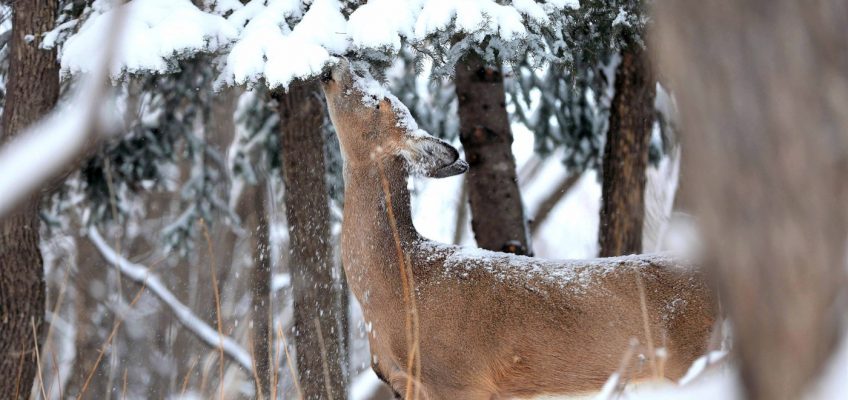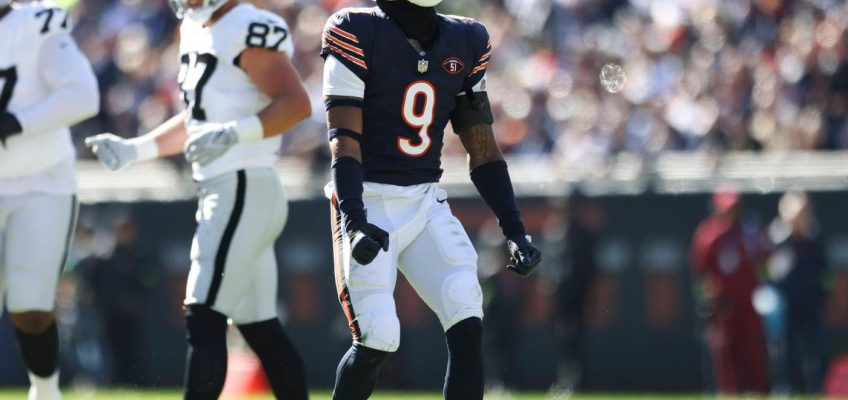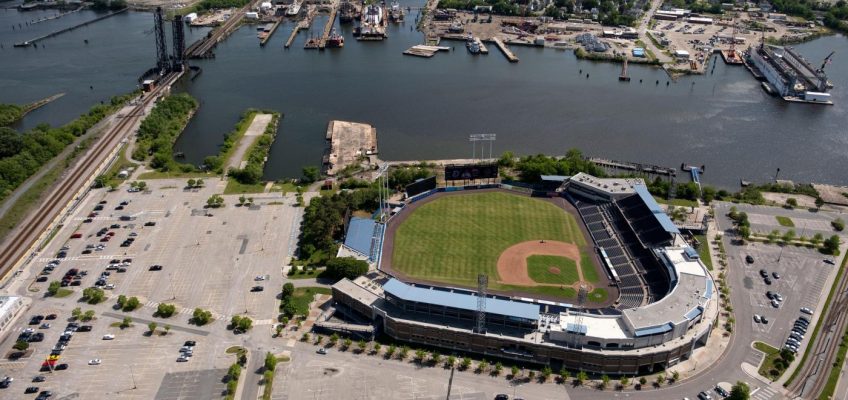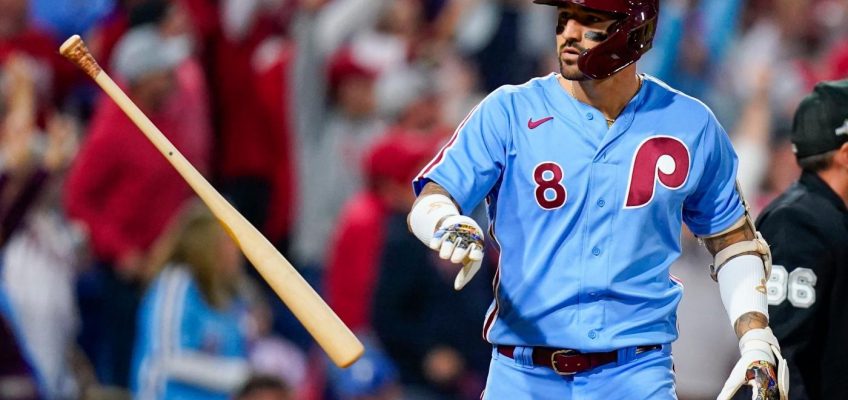Lonnie St. Arnold has been deer hunting up by Brimson, Minn., since 1986, through thick and thin, and lately it’s been nothing but thin.
In an area with among the fewest deer harvested per square mile anywhere in Minnesota, and a region that has been socked with the snowiest string of winters in more than a half-century, St. Arnold and his partners in the Stone Lake Whitetail Club have seen plenty of lean years for deer.
But maybe nothing as bad as this year.
“We were up to Brimson last week (for) some four-wheeling, bird hunting and checking deer sign,” St. Arnold, of Cloquet, reported recently. “We didn’t see a track, deer (pellets), rubs, scrapes … nothing. Don’t think I’ve ever seen it that bad.”
He isn’t alone. Across much of the Arrowhead region, people who have been out in the woods say this may be as few or fewer deer than after the harsh winters of the mid-1990s, or maybe even back to the 1970s, when deer numbers were so low that, in 1971, the DNR canceled the season entirely.
Craig Sterle’s family has been deer hunting north of Duluth for decades. But it’s becoming an effort in futility of late. Sterle notes they have had wolves in their hunting area for 45 years, and had snowy winters before, but still had deer in the past. The problem now, he noted, may be habitat.
“The family has been hunting the Marshall Truck Trail for just shy of a century. Over the years, the hunting has been up and down, much like anywhere else. But we’ve bottomed out recently. There hasn’t been a deer taken in about six years,” said Sterle, of Barnum. “Not that our hunting skills have eroded. There just are no deer. Literally, there are no deer.”
More deer south, and it’s not even close
If there was any sage advice to offer Minnesota deer hunters these days it would be simple: Go south.
Decades ago “up north” is where nearly everyone went deer hunting in Minnesota. Now, all of the top 10-highest deer management areas, based on deer harvested per square mile, are in the southern half of the state — some as high as 7.58 deer harvested per square mile.
Meanwhile, nine out of the 10 worst areas are in Minnesota’s Arrowhead, including the Boundary Waters Canoe Area Wilderness, two North Shore units and the Brimson-to-Babbitt-area unit — the four worst in the state and all under 0.15 deer harvested per square mile.
The News Tribune analyzed data from the Minnesota Department of Natural Resources that clearly shows how Minnesota’s best deer hunting has moved south into agricultural areas where winters are milder, predators are less numerous and nutritious food is plentiful.
An empty buck pole, like this one during the 2022 deer hunting season, has been a more common sight in northeastern Minnesota deer camps in recent years, with fewer deer on the landscape and far fewer deer being shot. (Steve Kuchera / Forum News Service)
The best you can do in the 100-numbered permit areas that cover all of northeastern Minnesota is area 157, west of Hinckley, which ranks 15th highest in the state — out of 130 deer permit areas — at 5.5 deer harvested per square mile.
It becomes very clear where the deep-snow winter dividing line has been over the past decade of heavy snow winters. While areas just 30 miles north of Duluth have among the lowest harvest rates in the state, areas just 30 miles south rank in the top 50-highest harvest.
Area 183, for example, which covers most of Carlton County, ranks 38th highest in the state with 2.86 deer harvested per square mile, while area 159, east of Hinckley, is 33rd best at 3.39 deer per square mile.
Duluth had a record 140 inches of snow last winter, while Two Harbors and Finland were over 150 inches. But not too far south, the Twin Cities saw 89 inches, St. Cloud 88 inches and Rochester just 64 inches of snow — all areas with far more deer.
Perhaps more damaging to deer, areas from Duluth north had 24 inches of snow on the ground from Dec. 15 to April 10, and as much as 3 feet on the ground in March, making it nearly impossible for deer to move freely in the woods. St. Cloud, by comparison, had less than 15 inches of snow on the ground most of the winter and never had more than 18 inches.
“The numbers are pretty clear, and not good, for much of that northeastern area,” said Todd Froberg, big-game program coordinator for the Minnesota Department of Natural Resources. “But, and I know some people don’t want to hear this, if you scout around, are willing to move your deer stand, you can still find good pockets of deer in places up north. Obviously, if you have ties to a deer camp and don’t want to hunt somewhere else, that’s not what you want to hear.”
The DNR calls it “site fidelity,” when hunters don’t want to move. But, until the northeastern herd rebounds, there isn’t much choice. Unless you don’t mind getting skunked.
“A lot of people want to blame wolves, and, of course, they impact the deer herd, but we had as many wolves and high deer numbers 20 years ago. What we didn’t have was this decade-long string of the snowiest winters. Deer just don’t do well with back-to-back-to-back harsh winters,” Froberg said. “It’s just really hard on them, on production and survival.”
It’s too soon to say whether the trend toward snowier winters is part of a permanent shift pushed by climate change. The DNR, and many hunters, are hoping for a string of low-snow winters as occurred in the late 1990s that led to all-time record-high deer numbers and deer harvests in the northeast in the 2000s.
“They can rebuild quickly,” Froberg said. “If they get the chance.”
Froberg and others are concerned that the lack of deer in northeastern Minnesota will cause even more hunters to simply drop out, a trend that’s already occurring even in places with lots of deer.
“We are already seeing hunter numbers slip as the baby boomers get older and quit. … But now we’re hearing from guys up there that they can’t keep their kids interested in deer hunting when they never see a deer,” Froberg said. “That’s a problem.”
Fewer doe permits, fewer deer shot
The DNR already knows there will be fewer deer shot in the northeast again this year, and that’s the way they want it. Antlerless or doe permits were cut yet again in many areas, and many areas remain bucks-only hunting, as the DNR uses its primary tool — keeping more does alive — to rebuild the herd.
Doe permits available across the 100-numbered deer management areas are down 43% from last year, from 7,625 to 4,325. Kelly Straka, DNR wildlife section leader, has urged all hunters to double-check what deer management area they hunt in to see if restrictions have changed, including requiring doe permits in areas where hunters recently have had the option to shoot any deer.
Statewide, deer numbers are generally expanding in many central and southeastern areas, holding their own in the west and decreasing in the northeast. Some 38 units of 130 statewide saw reduced doe or antlerless permits issued with 80 units the same as in 2022 and 12 units in the central part of the state with more doe permits available.
If you want to shoot a deer in Minnesota head to an area with agricultural crops and your odds will increase exponentially compared to hunting in the deep woods of Northeastern Minnesota. (Matt Gade / Forum News Service)
Because the actual harvest varies widely depending on the weather during the season, many hunters could still bag their bucks if conditions are good, and that might partially make up for fewer doe permits being issued.
But in far-northern Minnesota, there are simply fewer deer out there to be seen or shot.
“I think in your part of the state we need multiple years of mild winters, paired with lower bag limits, for deer populations to recover,” said Barb Keller, big game program specialist for the DNR, earlier this year.
Much of northeastern Minnesota will be bucks-only this year with other areas offering reduced antlerless or doe permits by lottery. The exceptions are the Boundary Waters Canoe Area Wilderness, where hunters can shoot either a doe or buck, and in the immediate Duluth area, where hunters can again take up to three deer to help reduce the urban and suburban deer population.
Many northern deer management areas saw their available doe permits cut in half or more. In management area 171 south of Grand Rapids, for example, the number of doe permits was cut from 1,500 last year to 250 this year, with doe permits cut from 2,000 to 500 in area 172.
The goal of issuing fewer antlerless permits, DNR officials note, is to leave more does on the landscape to help rebuild the herd for future years.
Related Articles
Wisconsin DNR approves new wolf management plan with no population goal
Gunfire from hunting can hurt hearing forever
Northern Minnesota tree-planting project is building better forests for deer
NW Minnesota boy, 13, shoots trophy bull elk on first hunt




